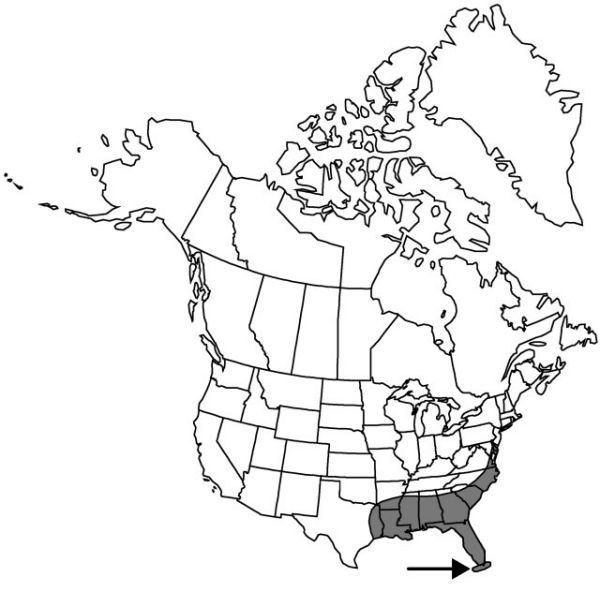Difference between revisions of "Smilax walteri"
Fl. Amer. Sept. 1: 249. 1814.
FNA>Volume Importer |
imported>Volume Importer |
||
| Line 8: | Line 8: | ||
}} | }} | ||
|common_names=Red-berried greenbrier;red-berried bamboo | |common_names=Red-berried greenbrier;red-berried bamboo | ||
| + | |special_status={{Treatment/ID/Special_status | ||
| + | |code=W1 | ||
| + | |label= | ||
| + | }}{{Treatment/ID/Special_status | ||
| + | |code=E | ||
| + | |label=Endemic | ||
| + | }} | ||
|basionyms= | |basionyms= | ||
|synonyms= | |synonyms= | ||
| Line 46: | Line 53: | ||
|publication title=Fl. Amer. Sept. | |publication title=Fl. Amer. Sept. | ||
|publication year=1814 | |publication year=1814 | ||
| − | |special status= | + | |special status=W1;Endemic |
| − | |source xml=https:// | + | |source xml=https://bibilujan@bitbucket.org/aafc-mbb/fna-data-curation.git/src/bb6b7e3a7de7d3b7888a1ad48c7fd8f5c722d8d6/coarse_grained_fna_xml/V26/V26_999.xml |
|genus=Smilax | |genus=Smilax | ||
|species=Smilax walteri | |species=Smilax walteri | ||
Revision as of 22:23, 27 May 2020
Vines; rhizomes slender, running. Stems perennial, climbing to clambering, branching, slender, 2–6 m, woody, glabrous; prickles scattered, subulate. Leaves deciduous to semievergreen; petiole 0.5–1 cm; blade abaxially green, drying to lightly orange-tinted brown, ovate-oblong, to ovate-lanceolate, with 3 prominent veins, thin, 6–10 × 3–7 cm, glabrous or minutely pubescent abaxially, not glaucous, base rounded, subcordate, or, sometimes, cuneate at petiole insertion, margins entire, apex acute, mucronate. Umbels few to many, axillary to leaves, few-flowered, loose, hemispherical; peduncle 0.5–2 cm, generally shorter than petiole of subtending leaf. Flowers: perianth brownish yellow; tepals 3–6 mm; ovule 1 per locule; pedicel 0.5–1 cm. Berries bright red to orange, globose, 7–9 mm, shining.
Phenology: Flowering Apr–Jun.
Habitat: Wet thickets, low pinelands, swamps, boggy areas
Elevation: 0–350 m
Distribution

Ala., Ark., Del., Fla., Ga., La., Md., Miss., N.C., S.C., Tex., Va.
Discussion
The brightly colored fruits make Smilax walteri conspicuous in the winter.
Selected References
None.